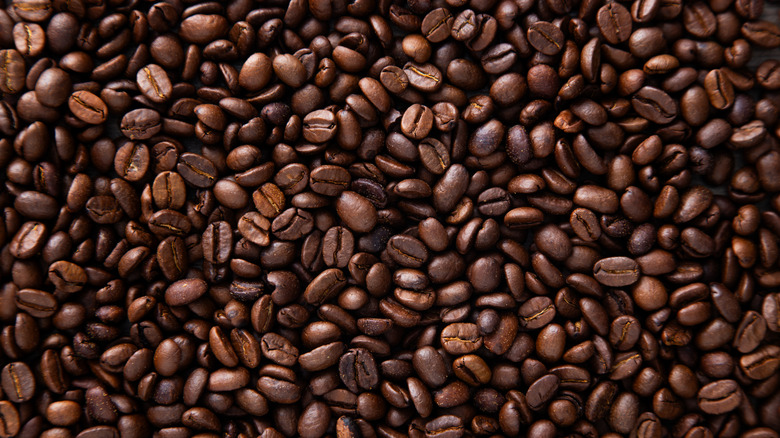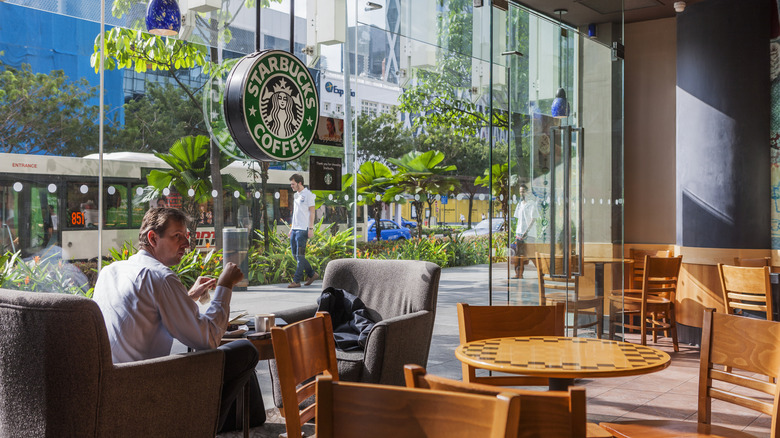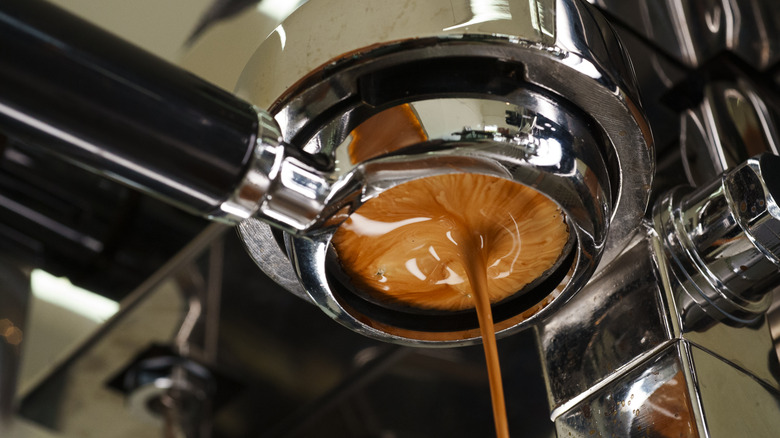The Differences Between First, Second, And Third-Wave Coffee
Whether you're googling this because you just went on a bad first date with an overly pretentious coffee connoisseur, or you yourself are the coffee connoisseur, here's a hard truth. Though wonderful, coffee is just a drink. If you want to walk right past Verve Coffee Roasters on a trip to Santa Cruz and instead spend your time in any underrated coffee city sipping on a Starbucks Frappuccino, you do you. That said, understanding different types and eras of coffee can help you know what to look for in your journey to enjoying it.
Modern coffee culture has been split (so far) into three distinct waves based on the general public's mindset toward coffee at different times. The first wave began in the 1800s, when coffee was popularized purely as a means of delivering caffeine to our bloodstream. The second wave began in the 1970s, when Starbucks and others made coffee a social event. The third and current wave began this century when coffee tasting notes and single origin brews made coffee drinking an artisanal skill. All of these overlap at times, and aspects of each one have carried through to others. Understanding the goals of each movement can bring you to a fuller understanding of how to better enjoy your coffee and the not-so-humble role that it plays in our world today.
From instant coffee to Starbucks flat whites
Coffee has been popular in America since it first became a country, but the drink didn't truly take off in the Western world until the mass production of instant coffee in the early 1900s. This made the beverage more accessible and affordable for the general public to drink at diners or even make at home, in what came to be known as the "first wave" of coffee.
Here's where Starbucks and its sometimes handcrafted, sometimes not drinks come in. In the 1960s, '70s, and beyond (with the first Starbucks opening in 1971), drinking coffee became less of a simple habit and more of an experience. Although coffeehouses existed in the United States prior to this, the focus of cafés in this second wave became more on customer experience as they gained more of a role as a gathering place. Think Central Perk in "Friends" or Monk's Cafe in "Seinfeld." Practically, flavored drinks such as the classic vanilla latte were added to menus, with the goal of making drinking coffee more enjoyable.
The third wave of coffee
Today, we're in the third wave of coffee (although certain coffee shops are arguably still second wave depending on their focus) with specialty cafés such as Santa Cruz's Verve Coffee Roasters or San Francisco's Four Barrel carefully curating every aspect of the coffee experience. Although the café atmosphere is still important, this wave is marked by an analytical, in-depth approach to sourcing beans and roasting techniques, highlighting lightly roasted single origin beans rather than blends and raising questions such as how altitude can affect coffee beans' growth and flavor.
These lighter roasts result in more of a fruity flavor whereas darker roasts result in more caramelized or chocolatey beans. Third-wave coffee drinking also often means drinking cappuccinos or pour-overs without syrup add-ins masking the coffee's flavor. And yes — the third wave also created coffee snobs (you win some, you lose some).


